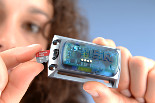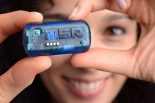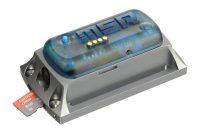High
performance electric cars are being developed across Europe for Formula
Student, an engineering education competition like no other. The team from Instituto Superior Técnico, Lisbon, Portugal may have a secret weapon in the
form of a test bench based upon a wireless torque sensor.
Formula Student (FS) aims to develop
enterprising and innovative young engineers and encourage more young people to
take up a career in engineering. It is designed to test students’ abilities and
demonstrate their capabilities to deliver a complex and integrated product in
the demanding environment of motorsport.
Entry into the competition usually forms part
of a degree-level project and is viewed by the motorsport industry as the standard
for engineering graduates to meet, transitioning them from university to the
workplace. Many FS participants go on to have amazing careers either in
motorsport or elsewhere.
Sensor Technology Ltd has supplied aTorqSense system to the Formula Student team at Lisbon’s renowned technical
university, the Instituto Superior Técnico,
so that they can develop a high performance electric motor for their car. Their
efforts will be doubly impressive as the power/weight ratio will far exceed any
previous electric motor development undertaken in Portugal.
FST Lisboa is one of
Portugal’s most successful Formula Student teams, having been actively involved
since 2001. With seven prototypes from past events, the team has achieved
national recognition for its innovative engineering and project management. In
fact the team’s fourth car was the first ever high performance electric car
developed in Portugal, while its 2017 design was the first four-wheel drive
electric prototype completely developed in Portugal.
This year the team,
composed of students from several engineering courses (Mechanical, Naval,
Electrical, Aerospace, Informatics and Industrial Management), is pushing to
even greater heights and developing its own electric motors.
Henrique
Motta, who is studying industrial engineering and management and
is also Sponsor Manager for FST Lisboa, explains that this year’s entry is
based on the team’s previous electric car which was the first to have all-wheel
drive transmission. Thus much of the focus is now on developing, testing
and refining the electric motor.
He
gives some details: “TorqSense has an
important role with us. We have been developing our own electric motors for the
past two years and now we are starting to build production units that will be
fitted into the car, which is designated FST 08e. As a very important part of
the motors’ development, we need to test them rigorously and log huge amounts
of performance data so that we can analyse it and work toward an optimised
final design.”
The TorqSense sensor will allow the team to measure the motors’ torque
to predict its behaviour once installed in the car. They will be testing motors
to their limits in the test bench, so should eventually be able to predict
completely how it will perform in all circumstances.
The testing regime has been developed so that the TorqSense will be used
in all bench tests to fully model all the performance characteristics of the
prototype motor. The tests will go a maximum speed of 20 000rpm and maximum
torque of 30Nm.
TorqSense has often been used in dedicated test
benches, for prototypes as varied as wind turbines, industrial fans, windscreen
wiper motors, unmanned drones and model aircraft as well as for many electric
vehicle projects. It is often the preferred solution because, being wireless,
it is easy to set up for each new test run and does not require a large amount
of wiring and slip ring setting each time.
However FST Lisboa says it was primarily
attracted to TorqSense because of its connectivity, as Motta explains: “TorqSense allows us to easily connect other hardware and software
solutions using USB or CAN bus. We also like the ease of use of Sensor
Technology’s software products such as TorqView and the ETD Transducer display,
which make the visualisation and logging of data a simple one-step process.”


























